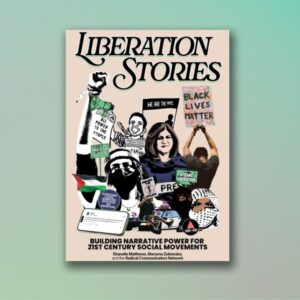
Welcome to another installment of NPQ’s fundraising advice column, Ask Rhea! For those who might be new, Rhea Wong is a fundraising expert and professional coach, exuberant author of Get That Money, Honey! host of the Nonprofit Lowdown podcast, and an unfailingly encouraging voice in a sometimes-bleak landscape. Rhea wants you to succeed, and she’s here to answer your questions.
Write Rhea with your fundraising questions through this NPQ submission form. In the form, select “Fundraising” from the “Question Topic” drop-down menu; and please let us know if you would like to remain anonymous or, rather, if you’d like to see you and your nonprofit highlighted here for our collective learning.
Dear Rhea,
I’ve got a meeting with a long-time supporter coming up. They’ve been generous before, but I want to make sure I make the most of our time together. I don’t want it to feel like a pitch meeting, but I also don’t want to walk away wishing I’d asked better questions. What should I be asking a major donor so I really understand how to deepen the relationship?
Signed,
Curious in Cleveland
Dear Curious in Cleveland,
I still remember my first donor meetings as a new ED. I thought my job was to “wow” them with a polished pitch about our programs. I’d talk and talk, run through every bullet point, hand them a glossy packet—and walk out completely drained.
Worse, I’d learned nothing. I didn’t know what they cared about most, what drove them to give, or if the timing was right for them. There was no real connection, just a one-sided monologue.
It took me years—and a lot of awkward coffees—to realize my role wasn’t salesperson. It was philanthropic advisor. I’m not there to convince them of anything. I’m there to understand their why and help them reach their philanthropic goals.
Think of yourself as Yoda. Yoda doesn’t run around the galaxy handing out lightsabers. He listens. He asks the right questions. He helps Luke figure out who he currently is and what he’s meant to do next. As I see it, your donor is the hero of the story. You’re the guide who helps them achieve the impact they want in the world.
Here’s the rule I follow now: they should do 75 percent of the talking, you should do 25 percent. Your 25 percent is mostly asking thoughtful questions and sharing information that’s directly relevant to what they’ve said.
Think of yourself as Yoda. Yoda doesn’t run around the galaxy handing out lightsabers. He listens. He asks the right questions.
Five questions to get there:
- “What first brought you to our work, and what’s kept you connected?”—Leads with their story and what matters most to them.
- “How do you decide which causes to invest in?”—Reveals their process and priorities without making it transactional.
- “What change would you be most excited to help make possible in the next few years?”—Surfaces their vision for impact.
- “How do you like to be involved and kept updated?”—Respects their preferred pace and style of engagement.
- “Who else do you think should know about this work?”—Invites them to expand the circle without pressure.
Once you’ve asked, resist the urge to fill the silence. Let them think. Listen for their values, motivations, and the moments they light up. Your goal is to walk away knowing what they care about, how they make giving decisions, and how you can help them create the change they want to see.
When you focus 75 percent on listening and 25 percent on talking, you’ll leave those meetings energized—with the insight to build a relationship that’s both meaningful and productive.
Warmly,
Rhea
Hi Rhea,
I’m new to my role and have inherited a list of major donors. I want to reach out and introduce myself, but I’m torn: do I just pick up the phone, or do I email first to set something up? I don’t want to annoy them, but I also don’t want to get lost in their inbox. What’s the best way to make that first contact?
Signed,
Nervous in New Orleans
Dear Nervous in New Orleans,
Let’s be real—your donors are already thinking, “She’s new so this is going to be a pitch” or “I don’t have time for another ‘let’s grab coffee’ that ends in an ask.”
That’s the elephant in the room. Pretending it’s not there is how you end up in voicemail purgatory. Name it (to yourself first), then design your approach to take all that pressure off. Your job right now is not to sell them on you. Your job is to earn the right to a conversation. I recommend the following steps to guide your outreach.
Step 1: Send something personal in the mail.
A hand-addressed envelope screams “open me” in a pile of bills. Inside, include:
- A short, warm letter saying you’re new and thanking them for their impact. Flat-out say you’re not asking for money
- A one-page “Impact Snapshot” showing results they made possible—bonus points if it’s visual and easy to scan
- A QR code or link to a 90-second video of you introducing yourself and telling one quick, human story from the field
Step 2: Follow with a short voicemail.
Within two days of delivery:
“Hi [Name], this is [You] from [Org]. I just sent you a note—no ask, just a thank you and an intro. I’d love to hear your perspective when you have a few minutes. I’ll email you too.”
Step 3: Send a two-sentence email.
Subject: Following up on my note
Hi [Name],
I’m the new [role] at [Org]. I’d love to learn from your experience with us—no agenda, just a conversation. Would you be open to a 15-minute call on X DATE?
Design your approach to take all that pressure off.
This approach works because it explicitly states that the interaction is not a solicitation and lowers their defenses. This approach is grounded in prioritizing trust-building first by providing authentic recognition, demonstrating measurable outcomes, and establishing genuine human connections before solicitation! This strategy stands in stark contrast to blasting the generic “Let’s meet” requests, a tactic that has grown stale and ineffective. Instead, you’ve layered mail, phone, email, and video so it feels more thoughtful, not transactional.
From here, there are a few potential steps you can take. Consider it a “choose your own adventure” of sorts. After your first contact, you’ll decide what feels best based on their reaction. Donor responses typically fall into four buckets:
Scenario 1: The Warm Yes
They reply fast: “Sure, let’s meet.”
-
- Lock that meeting in immediately.
- Let them talk 75 percent of the time—you’re listening for their why, not reciting your annual report.
- Follow up with a thank-you recap that proves you listened and gives them one relevant nugget (photo, article, stat).
Goal: Build trust, set up the next step.
Scenario 2: The Lukewarm Maybe
They like you but their calendar’s a crime scene.
-
- Nail down when “later” is and put it in your calendar.
- Keep a slow drip going:
- Quarterly handwritten postcard with a great photo
- Two short, story-driven emails a year
- A no-pressure invite to something fun and useful—tour, coffee with the ED, behind-the-scenes
Goal: Stay in the mix until timing works.
Scenario 3: The Ghost
Crickets. You’ve mailed, called, emailed. Nothing.
-
- Wait four to six weeks, then send a “just thinking of you” postcard—no ask.
- Try a different channel: LinkedIn, mutual connection intro, even text if it’s appropriate.
- If three attempts over six months get nothing, move them to “inactive major donor” but keep an annual light touch like a holiday card.
Goal: Keep the door cracked without bleeding energy.
Scenario 4: The Quick Decline
They say, “No thanks,” or “Please don’t contact me.”
-
- Thank them sincerely for past support.
- Respect the boundary—no “just one more thing” emails.
- Log the data point and move on.
Goal: Protect the relationship and your reputation.
You want to match their energy, not your ideal close date.
Next comes post-contact segmentation. You can think about this in the following informal (and internal) categories:
- Hot Shots: Big potential + already engaged. Custom plan, personal touches every six to eight weeks
- Slow Burners: Big potential + slow to engage. Quarterly value touches, reinvite when relevant
- Champions: Modest capacity but deep engagement. Turn them into ambassadors—hosts, introducers, storytellers
- Cool Customers: Low capacity + low engagement. Thank them, send annual updates, focus your time elsewhere
No matter the response, keep this bottom line in mind: You want to match their energy, not your ideal close date. The fundraising pros keep doors open, the pressure low, and the follow-up consistent. You’re building a runway, not forcing a takeoff.
Warmly,
Rhea














